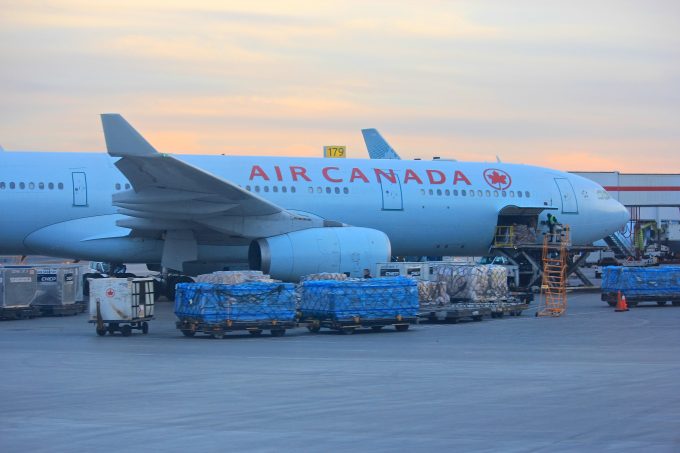Chinese airlines eye expansion and US allows more flights in
A little air update from China. Suparna Airlines, formerly Yangtze River Airlines, is to retire ...

Canada’s leading perishables forwarder is building a second leg to stand on – its core business has not been stellar lately.
“2019 has not been a good year in general for perishables forwarders. Everybody is down,” said Brendan Harnett, chairman and chief executive of Flying Fresh Air Freight, the Vancouver-based company that topped Canada’s perishables forwarder rankings last year.
The perishables sector has been strong in recent years, prompting the likes of Kuehne + Nagel and Panalpina to take over a number of regional specialists to build up a position in the market.
“Last year was a record year,” Mr Harnett said. But this year has brought a number of setbacks in North America.
The cherry season, usually one of the highlights on the west coast, proved disappointing and the crop in the Pacific north-west was about 20% down on last year, largely due to adverse weather conditions, he said.
A spell of cold and rainy weather damaged California’s cherry crop, severely limiting its potential for export and most of the harvest was sold in the domestic market, explained Chris Connell, senior vice-president North America of Commodity Forwarders, a subsidiary of Kuehne + Nagel.
Growers’ woes with weather conditions in the Pacific north-west continued this month, affecting the strawberry harvest.
“It looks like the crop is off about 20%, same as the cherries,” Mr Harnett said, adding that he hoped blueberries, which come on a bit later, will fare better.
Canadian exports of salmon have also suffered a setback this year. This was caused by adverse conditions elsewhere on the planet: a bloom of algae killed an estimated eight million salmon at Norwegian fish farms in a single week in May, a loss of 40,000 tonnes of fish.
In a race to avert greater losses, Norwegian fish farms ramped up their sales of salmon stock before more fish could be killed by the algae.
“Our customers say Norway has flooded the markets into Europe and Asia with their farmed salmon,” reported Vito Cerone, director of marketing & sales, Americas of Air Canada Cargo. “They were literally taking out as much of the fish as they could, before the disease could spread, and have saturated the market.”
Faced with diminished demand in Asia, Canadian salmon farms have switched their sales focus to the North American market, he added.
Canadian seafood, led by lobster, has been going strong into Asia. Last year this traffic received a massive boost from the trade conflict between China and the US, after Beijing put an additional 25% tariff on US lobster, bringing the overall duty level to 40%.
This traffic remains strong, but it has lost its lustre for forwarders and airlines, as Chinese buyers have taken control of much of the market. First Catch, a Chinese-owned seafood forwarder based in Halifax, has two dedicated 747 freighter flights a week into Halifax, which are operated by SkyLease. Suparna also has two 747F flights a week into Halifax.
Korean Air has scaled back its maindeck presence in Halifax from three to two flights a week and Air Canada has shifted its focus.
“I don’t want to play in that aggressive market,” Mr Cerone said. “We’re offsetting this with other types of cargo.”
The US-China trade conflict may have given Canadian seafood exporters a leg up over their US competitors, but other Canadian perishables exporters are also facing headwinds in China. In May, the Chinese government blocked pork imports from two large Canadian suppliers in a move that has been associated with political issues.
And forwarders have noted that both US and Canadian cherry shipments into China have faced increased inspection activity and delays in clearance upon entering the country.
All this has hurt perishables forwarders operating in Canada. After 20% growth in 2018, Flying Fresh has eked out 1.6% volume gains this year so far, but it has been a struggle.
“If a forwarder in perishables can operate with zero growth in 2019, he will be successful. Volumes are down so much,” Mr Harnett said.
Nevertheless Flying Fresh is still expanding. Toronto has been a major focus for the company this year, and Mr Harnett is still looking to build up a larger presence in the US, where the company now has a branch in Boston.
However, the drive to grow the business is looking increasingly outside the perishables arena.
“We’re expanding in the dry cargo area. We would like to achieve a good balance between perishables and hard freight,” Mr Harnett said. “Dry cargo seems to be having a better year.”
Comment on this article
A.Kout
July 29, 2019 at 3:05 pminteresting article.
we dont share the comments of the flying fresh owner in terms of AP-Asia Pacific
and the perishable volume availablle freight by air+ocean .This is still a growing market(inside AP)
The perishable freight forwarders and owners we know in person do have a very strong 2019 and are still anticipating +5 % growth of 2018 figures.Maybe its
why they are market leaders this(AP) is a very stable market for them.
If the Canadian/Northern American perishable market is facing this explained
market environment than based on this information the recent KN buy of
WWP shouldn´t be a too expensive acquistion,logically more on the lower end
and proably a guess of us a bargain buy.
Additionally as Perishables counts 1/3 of the total airfreight volume of
KN as by Mr.Trefzger indicted,this explained market environment in US/CDC export wise should have an heavy impact on KN perishable volumes flown in total 2019.
kind regards
A.Kout
Team Akclimited
PS:
We are working with ,in commoditites now +10 years and we have never ever
had any acitivities on this geographically speaking on US/CDN more Latin/SouthAmerica where you can still find growth as well as our main focus lies
mainly on AP and here within Asia Pacific.